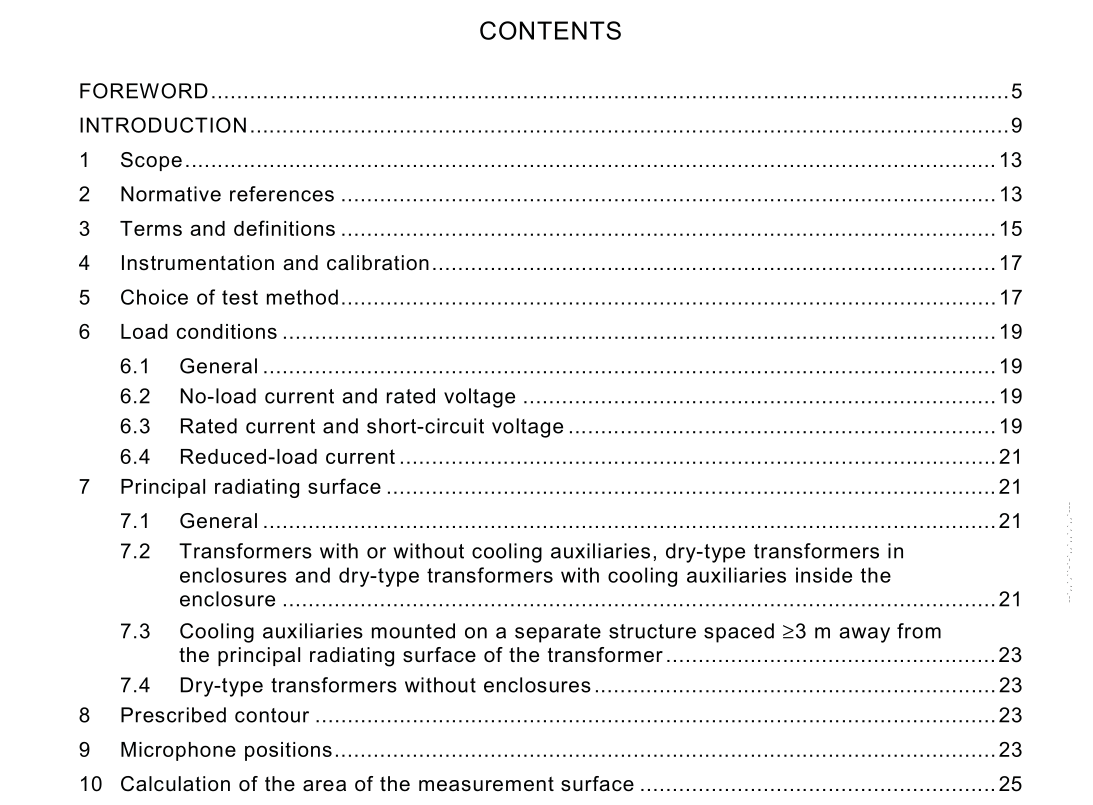IEC 60076-10 pdf download

IEC 60076-10 pdf download.Power transformers
1 Scope
This part of IEC 60076 defines sound pressure and sound intensity measurement methods by which sound power levels of transformers, reactors and their associated cooling auxiliaries may be determined. NOTE For the purpose of this standard, the term “transformer” means “transformer or reactor”. The methods are applicable to transformers and reactors covered by the IEC 60076 series, IEC 60289, IEC 60076-1 1 and the IEC 61 378 series, without limitation as regards size or voltage and when fitted with their normal cooling auxiliaries. This standard is primarily intended to apply to measurements made at the factory. Conditions on-site may be very different because of the proximity of objects, including other trans- formers. Nevertheless, the same general rules as are given in this standard may be followed when on-site measurements are made.
4 Instrumentation and calibration
Sound pressure measurements shall be made using a type 1 sound level meter complying with IEC 61 672-1 and IEC 61 672-2 and calibrated in accordance with 5.2 of ISO 3746. Sound intensity measurements shall be made using a class 1 sound intensity instrument complying with IEC 61 043 and calibrated in accordance with 6.2 of ISO 961 4-1 . The frequency range of the measuring equipment shall be adapted to the frequency spectrum of the test object, that is, an appropriate microphone spacer system shall be chosen in order to minimize systematic errors. The measuring equipment shall be calibrated immediately before and after the measurement sequence. If the calibration changes by more than 0,3 dB, the measurements shall be declared invalid and the test repeated.
5 Choice of test method
Either sound pressure or sound intensity measurements may be used to determine the value of the sound power level. Both methods are valid and either can be used, as agreed between manufacturer and purchaser at the time of placing the order. The sound pressure method of measurement described in this standard is in accordance with ISO 3746. Measurements made in conformity with this standard tend to result in standard deviations of reproducibility between determinations made in different laboratories which are less than or equal to 3 dB. The sound intensity method of measurement described in this standard is in accordance with ISO 961 4-1 . Measurements made in conformity with this standard tend to result in standard deviations of reproducibility between determinations made in different laboratories which are less than or equal to 3 dB.
6 Load conditions
6.1 General Load condition(s) shall be agreed between the manufacturer and purchaser at the time of placing the order. If a transformer has a very low no-load sound level, the sound due to load current can influence the total sound level in service. The method to be used for summing the no-load and load current sound levels is given in Clause 1 4. Current taken by a reactor is dependent on the voltage applied and consequently, a reactor cannot be tested at no-load. Where sufficient power is available in the factory to permit full energization of reactors, the methods to be followed are the same as those for transformers. Alternatively, measurements may be made on-site if conditions are suitable. Unless otherwise specified, the tests shall be carried out with the tap-changer (if any) on the principal tapping. However, this tap position may not give the maximum sound level in service. In addition, when the transformer is in service, a superposition of the flux at no-load conditions and the stray flux occurs which causes a change in the flux density in certain parts of the core. Therefore, under special conditions of intended application of a transformer (particularly variable flux voltage variation), it may be agreed to measure the sound levels on a tapping other than the principal tapping, or with a voltage other than the rated voltage on an untapped winding. This shall be clearly indicated in the test report.









